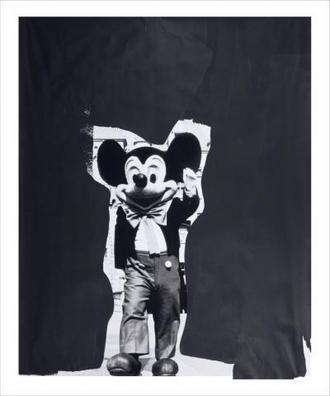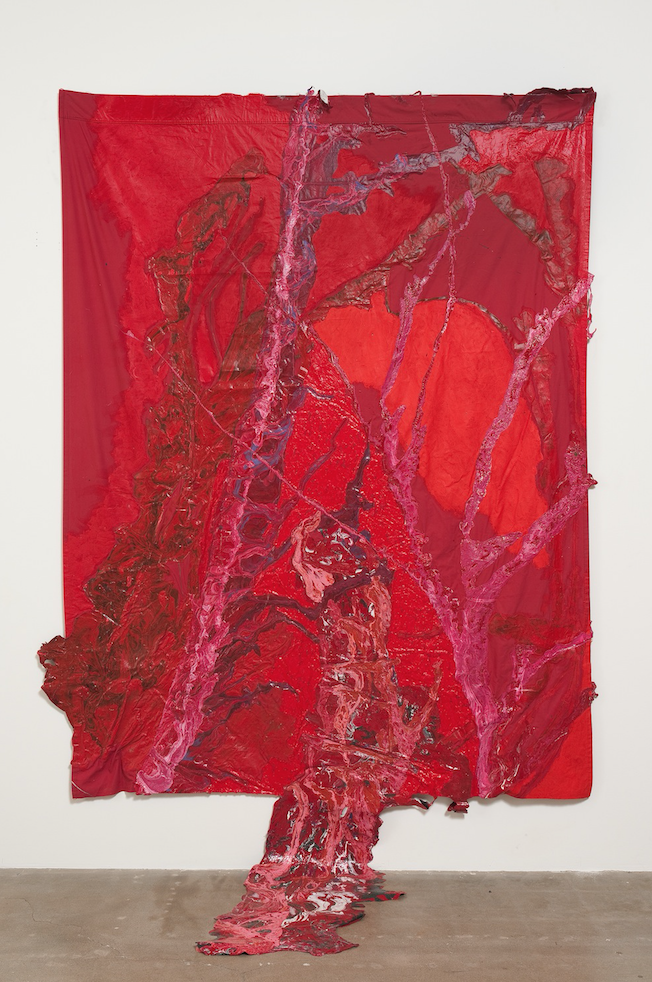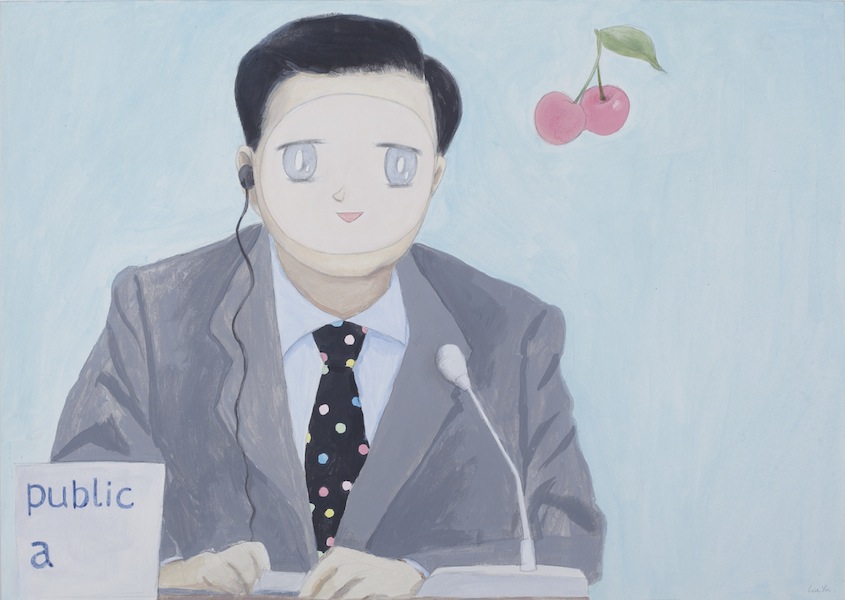Knight #6
2011 - Drawing & Print (Drawing & Print)
Karl Haendel
Haendel’s series Knights (2011) is a set of impeccably drafted, nine-foot-tall pencil drawings depicting full suits of armor. The series riffs on previous investigations by the artist such as his meticulous depictions of masculine political figures, which included a headless J. Edgar Hoover and a Hitler head floating vulnerably in the center of a white expanse (Hitler’s iconic mustache was crafted from the artist’s pubic hair). Rendered in soft graphite, the imposing Knights embody the ostensibly conflicting ideals of chivalrous deference and invulnerable masculinity.
An expert draftsman well versed in semiotics, Karl Haendel strategically manipulates tangled visual, material, and textual themes, often to humorous and evocative effect. His juxtapositions are as resonant as they are unexpected, whether they take the form of layered graphite drawings, video, or installation. Haendel’s distinct brand of honest humor, honed in his current hometown of Los Angeles, is rooted in the rigorous studies he undertook at Brown University (BA), UCLA (MFA), and the Whitney Independent Study Program.
Colors:
Related works featuring themes of: » Americana, » Appropriation Art, » Black and White, » Collective History, » American

© » KADIST
Lisa Oppenheim
2003The Damaged series by Lisa Oppenheim takes a series of selected photographs from the Chicago Daily News (1902 – 1933) as its source material...

© » KADIST
Lisa Oppenheim
2003The Damaged series by Lisa Oppenheim takes a series of selected photographs from the Chicago Daily News (1902 – 1933) as its source material...

© » KADIST
Hank Willis Thomas
2012Bread and Roses takes its name from a phrase famously used on picket signs and immortalized by the poet James Oppenheim in 1911...

© » KADIST
Glenn Ligon
2000Glenn Ligon’s diptych, Condition Repor t is comprised of two side-by-side prints...

© » KADIST
Will Rogan
2010MUM , the acronym used to title a series of Rogan’s small interventions on found magazines, stands for “Magic Unity Might,” the name of a vintage trade magic publication...

© » KADIST
Will Rogan
2014Will Rogan’s video Eraser (2014) shows a hearse parked in a clearing amidst leaf barren trees...

© » KADIST
Daniel Joseph Martinez
1978For I use to eat lemon meringue pie till I overloaded on my pancreas with sugar and passed out; It seemed to be a natural response to a society of abundance (1978), also known as the Bodybuilder series, Martinez asked male bodybuilding competitors to pose in whatever position felt “most natural.” They are obviously trained in presenting their ambitiously carved physiques, but their facial expressions seem comparatively unstudied...

© » KADIST
Alexis Smith
1990Iron Sorrows (1990) brings together what are for Alexis Smith common motifs and materials such as scavenged and repurposed metal, and street signage...

© » KADIST
Paul McCarthy
2010To make Mickey Mouse (2010), Paul McCarthy altered a found photograph—not of the iconic cartoon, but of a man costumed as Mickey...

© » KADIST
Chen Shaoxiong
2006After engaging primarily with video and photography for more than a decade, Chen turned to painting to explore the issue of urban change and memories—both personal and collective...

© » KADIST
Jeffrey Vallance
1978Vallance’s Rocket is a vibrant picture in which masses of color and collage coalesce into a central vehicle, yet the whole surface seems lit with the roar of space travel...

© » KADIST
Dinh Q. Lê
2008Hill of Poisonous Trees (three men) (2008) exemplifies the artist’s signature photo-weaving technique, in which he collects diverse found photographs—portraits of anonymous people, stills from blockbuster films, or journalistic images—cuts them into strips, and weaves them into new composition...

© » KADIST
Hamra Abbas
2010At first glance, Cityscapes (2010) seems to be a collection of panoramic photographs of the city of Istanbul—the kind that are found on postcards in souvenir shops...

© » KADIST
Hank Willis Thomas
2014Shot in black and white and printed on a glittery carborundum surface, Black Hands, White Cotton both confronts and abstracts the subject of its title...

© » KADIST
Rodney McMillian
2013In his evocative Landscape Paintings, McMillian uses second-hand bedsheets, sourced from thrift shops, as his starting point...

© » KADIST
Chen Shaoxiong
2007After engaging primarily with video and photography for more than a decade, Chen turned to painting to explore the issue of urban change and memories—both personal and collective...




